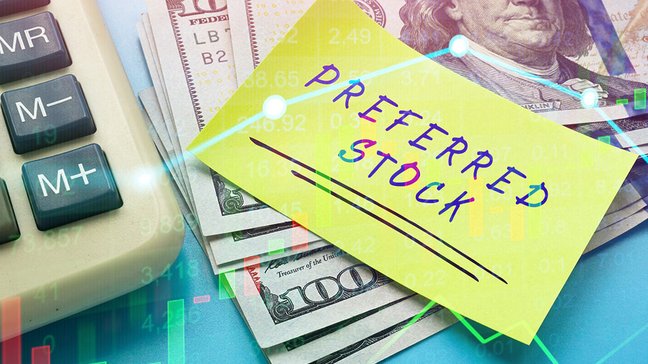Preferred Stocks Explained for Beginners
Preferred stocks represent a specific type of security with a pre-defined level of dividends paid to the shareholder. These assets generally come with priority over common stocks when it comes to receiving the payout. The name of the security does not necessarily mean they are preferred by the investor. So, what are preferred stocks and how do they work?

In this article, we will discuss some obvious hits and misses of this particular instrument. Additionally, we will discuss some baseline preferred stocks trading methods as well as provide a list of preferred stocks letting you choose the best one.
What Are Preferred Stocks?
In some ways, these assets can be used similarly to bonds. They both have the same source of income for the shareholder, which is a dividend. Besides, both instruments come with a higher yield if compared to traditional securities and shares. The same way a bond, preferred stocks usually show better performance with a declined interest rate on the background.
Additionally, a company can specify a date when the stock can be “called” or redeemed even at a higher price. This is what makes the instrument quite unique taking into account some extra features such as the ability to convert this type of stock into common shares.
up to 200%

from 0 pips

Trading platform

Preferred Stocks Pros and Cons
Unlike common stocks that are believed to be a good option to invest in in the long run, preferred stocks are a better option for short-term investors. This is due to higher fluctuation level meaning these assets have a lower potential to perform growth within a longer time frame. Here are some major pros and cons you need to consider before investing in this type of asset.
Pros
- Investors get a specified number of dividends with a higher value than traditional stock profits.
- Minimum chances of having preferred stocks losing their value because of the company’s poor performance.
- Preferred stockholders have the priority for paying out dividends in case of the company’s termination or bankruptcy.
Cons
- The stock value is limited and cannot go higher than the redemption value.
- The asset does not provide the right to vote.
Trading Preferred Stock
To trade preferred stocks, you need to become a secondary market participant. The main challenge here is that the asset price does not usually match par values. It means that one is not guaranteed to get the same amount he or she initially paid for the asset.
Preferred Stock Dividends Types
Regular dividends are the main reason why many investors are attracted to these assets. Besides, they have proved to be a reliable instrument to invest in since 1900 featuring the average return over 7% through all these years. At the same time, sometimes dividend payments are not guaranteed, which makes this instrument a bit risky depending on the dividend type you choose:
- Cumulative Dividends can be paid later, in case the company cannot proceed with the payment on time. They accumulate by the next pay date depending on when the company will be able to pay them out.
- Noncumulative payments do not guarantee any payout and can even be missed with no fines or penalties for the company. For instance, an organisation can simply skip the payout in case it cannot afford paying dividends to shareholders.
So, it is very important to decide on which type of dividends suits you the most and if you are ready to put up with missed or skipped payouts.
The List of Preferred Stocks
To choose the best preferred stocks from the biggest companies and issues, have a look at the list of 3 best offers:
| Symbol | ETF Name | Total Assets ($MM) |
|---|---|---|
| PFF | iShares Preferred & Income Securities ETF | $17,312.40 |
| FPE | First Trust Preferred Securities & Income ETF | $7,484.39 |
| PGX | Invesco Preferred ETF | $6,500.11 |
This material does not contain and should not be construed as containing investment advice, investment recommendations, an offer of or solicitation for any transactions in financial instruments. Before making any investment decisions, you should seek advice from independent financial advisors to ensure you understand the risks.
